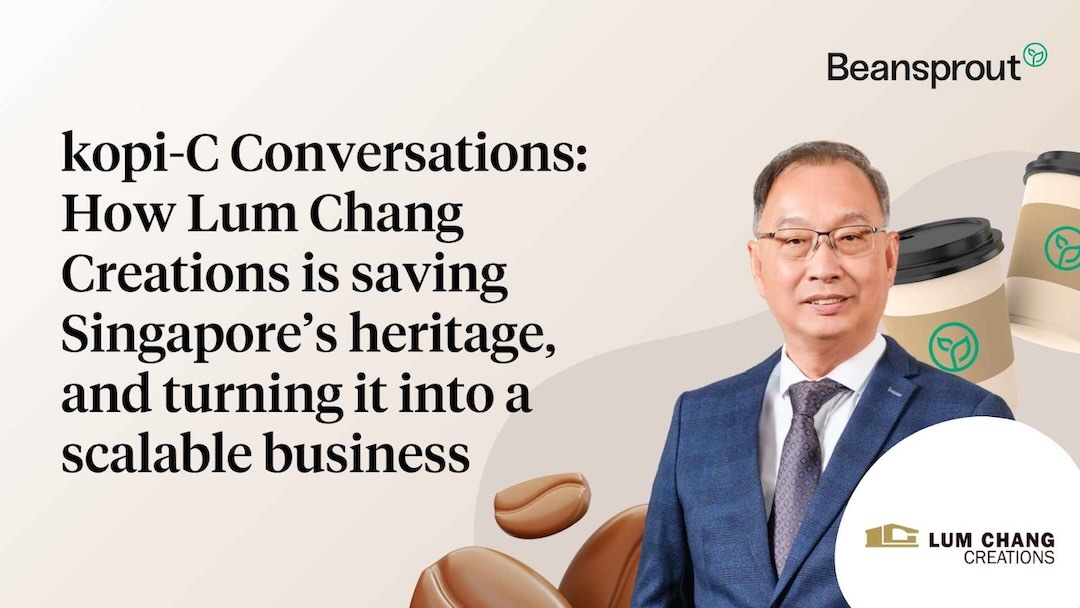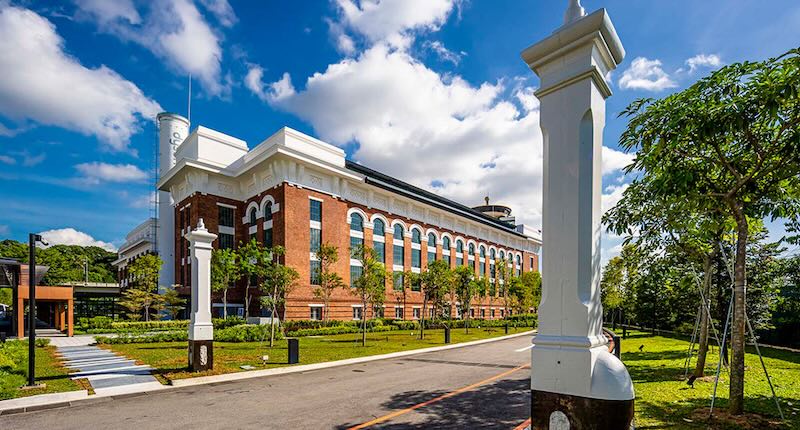How Lum Chang Creations is saving Singapore’s heritage, and turning it into a scalable business
Stocks
Powered by

By Julian Wong • 13 Aug 2025
Why trust Beansprout? We’ve been awarded Best Investment Website at the SIAS Investors’ Choice Awards 2025
Under (MD) Lim Thiam Hooi, Lum Chang Creations (LCC) is guided by a belief in long-term value for both Singapore’s heritage and shareholders.

When (MD) of Lum Chang Creations (LCC) Lim Thiam Hooi speaks about old buildings, he doesn't talk about square footage or redevelopment potential. Instead, he describes intricate details carved into facades and interiors, hidden under layers of flaking paint on century-old walls.
He talks about flowers that have lost their veins to decades of overpainting, and how skilled artisans painstakingly restore them with scalpels.
For Mr Lim, buildings are stories. To him, the act of restoration is a kind of cultural stewardship: You look at an old building, and after our work, it’s transformed - we’ve breathed new life into it.
This ethos lies at the heart of LCC’s proposition as a newly listed firm on the Singapore Exchange’s Catalist board. Spun off from Lum Chang Holdings, LCC has established its own identity as a specialist in urban revitalisation—a niche that includes conservation, restoration, and adaptive reuse of heritage and ageing buildings.

(St James Powerstation, Image credit: St James Powerstation)
A new chapter backed by maturity and market momentum
Lim explains that the timing to spin off aligned with several factors: a stable market environment, increased investor receptivity to service-oriented construction plays, and growing government support for conservation and adaptive reuse. Internally, LCC had reached what he calls 'operational maturity'.
"Having achieved a track record of repeated project success, diversified client segments, and investor interest," Lim explains that it made sense for LCC to create its own separate branding.
From a day-to-day decision-making standpoint, not much has changed. But the listing has brought new visibility, capital, and optionality, with LCC now exploring overseas expansion (Malaysia is a natural next step), high-end residential projects like Good Class Bungalows (GCBs), and even mergers and acquisitions within adjacent sectors.
The challenge ahead is one of balance. As LCC scales, Mr Lim stresses the importance of holding on to the principles that differentiate it, with a deep respect for heritage and the craft of conservation.
"Our work goes beyond business. It’s a legacy for the next generation," he says.
Guided by this passion, we seek projects where we can honour and revitalise existing structures, ensuring that what is worth keeping is thoughtfully retained for years to come.
Riding the conservation tailwind
Some might argue that Singapore’s real estate market has historically prized efficiency over sentiment. But as land scarcity deepens and public appreciation for heritage grows, government bodies like the Urban Redevelopment Authority (URA) and the National Heritage Board (NHB) have leaned into conservation.
According to URA, over 7,200 buildings are currently gazetted for conservation, and this number is expected to rise as Singapore balances development with historical identity.
"The old National Library was a turning point," Lim recalls. "Once it was torn down, people realised what was lost. Now, there is more demand to preserve what remains."
LCC is riding this policy tailwind. Lim shares that LCC boasts a healthy forward order book, with S$122 million in contracts locked in as at 31 May 2025. Because these projects are relatively short in duration (12–24 months), he adds that it limits LCC's exposure to cost fluctuations and supply chain shocks.
Crucially, he says, LCC is also asset-light. By relying on in-house labour rather than heavy machinery, LCC maintains a degree of cost control that sets it apart from pure-play construction firms.
"Restoration requires artisan skills," he says. "We have workers who spend hours carefully removing paint to reveal a single motif. That’s not something you outsource to general labour."
This craftsmanship underpins many of Singapore’s most iconic restorations: the National Museum of Singapore, Singapore Red Cross House, Clarke Quay Block B, and St James Power Station.
In each case, LCC handled not just the aesthetic revival, but also structural, interior, and A&A (Addition and Alteration) work. LCC's ability to deliver end-to-end solutions gives the company a compelling edge in a space that is frequently fragmented.

(National Museum, Image Credit: Lum Chang)
A niche player with specialised expertise, skilled labour, and policy momentum
For Lim, he has positioned LCC as a rare proposition in the Singapore construction sector: specialised expertise, niche player with defensible capabilities, government policy support, and a built-in moat of skilled labour.
In the first half of FY2025, LCC reported a net profit margin of approximately 13% on revenue of S$40.8 million. This led to a 61.6% year-on-year increase in net profit compared to the first half of FY2024.
Singapore's broader policy emphasis on sustainability and cultural preservation has also created a more supportive environment for firms involved in heritage-related work.
The URA Master Plan 2019 and the forthcoming 2025 vision highlight priorities such as "liveable heritage" and place-based identity—areas that align with LCC's existing capabilities and service offerings.
Against this backdrop, LCC has committed to a minimum 30% dividend payout for FY2025 and FY2026, making it attractive to income-focused investors. Beyond that, LCC retains the flexibility to reinvest as needed, particularly if growth opportunities in Malaysia or GCB development materialise.
Lim also cites awards such as the URA Architectural Heritage Award and various other awards from the Building and Construction Authority (BCA) that further validate its track record.
Beyond this, Lim is proud to point out that LCC maintains an unusually low staff turnover rate in an industry known for churn. As best as he can, he fosters what he describes as a family culture—regular bonding sessions, overseas trips, open dialogue, and a commitment to upskilling.
This is also a pragmatic strategy. Artisan work takes time, can be expensive, and is frequently skill-dependent. Losing a trained worker means losing years of compounded knowledge.
As such, LCC runs what Lim describes as a 'pyramid training system' to develop artisan talents in-house, where skills are passed down from one layer to the next. It can take years to train a fully-fledged artisan.
Now that LCC is public, Lim wants to extend his ethos to shareholders.
"We walk together," he says. "IPO is just the first step. As we grow, our investors grow with us."
About Lum Chang Creations
Lum Chang Creations is a leading urban revitalisation specialist, offering comprehensive expertise in niche conservation and restoration works. Its services are complemented by interior fit-out and addition & alteration (A&A) capabilities.
About kopi-C: the Company brew
kopi-C is a regular column by SGX Research in collaboration with Beansprout (https://growbeansprout.com), a MAS-licensed investment advisory platform, that features C-level executives of leading companies listed on SGX. These interviews are profiles of senior management aimed at helping investors better understand the individuals who run these corporations.
Join the Beansprout Telegram group for the latest insights on Singapore stocks, REITs, bonds and ETFs.
Read also
Most Popular
Gain financial insights in minutes
Subscribe to our free weekly newsletter for more insights to grow your wealth
Comments
0 comments